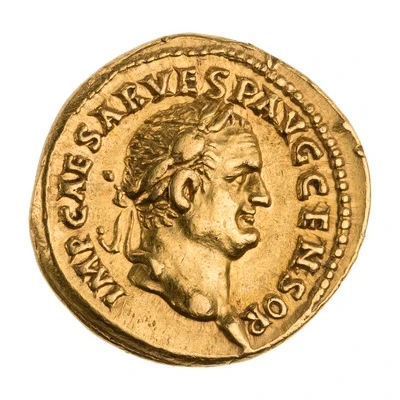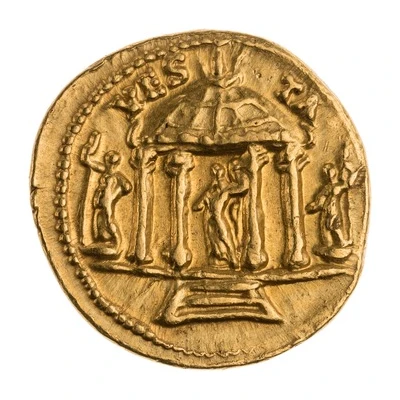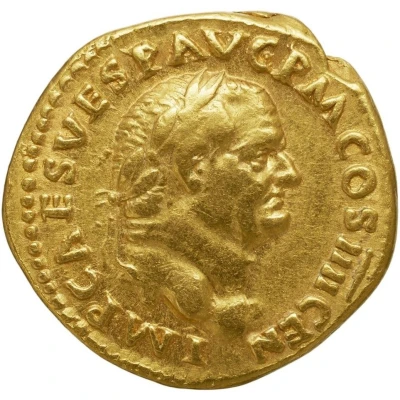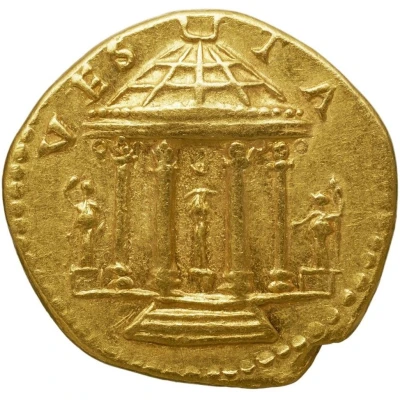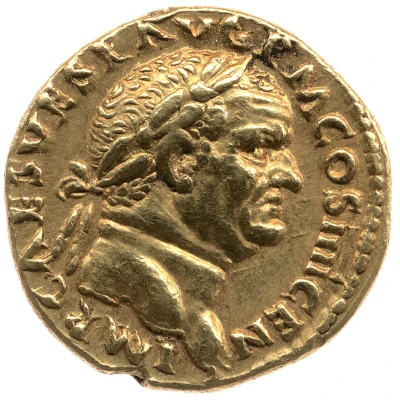


© Trustees of the British Museum
Aureus - Vespasian PAX AVG; Pax
73 year| Gold | 7.3 g | - |
| Issuer | Rome › Roman Empire (27 BC - 395 AD) |
|---|---|
| Emperor | Vespasian (Titus Flavius Vespasianus) (69-79) |
| Type | Standard circulation coin |
| Year | 73 |
| Value | 1 Aureus = 25 Denarii |
| Currency | Denarius, Reform of Augustus (27 BC – AD 215) |
| Composition | Gold |
| Weight | 7.3 g |
| Shape | Round (irregular) |
| Technique | Hammered |
| Demonetized | Yes |
| Updated | 2024-10-05 |
| Numista | N#249427 |
|---|---|
| Rarity index | 100% |
Reverse
Pax standing left leaning on column, holding caduceus over tripod and branch.
Script: Latin
Lettering: PAX AVG
Translation:
Pax Augusti.
Peace of the emperor (Augustus).
Comment
Source: Online Coins of the Roman Empire (OCRE)Interesting fact
The Aureus was a gold coin used in ancient Rome, and the Vespasian coin was minted during the reign of Emperor Vespasian (69-79 AD). The coin's obverse side features the image of Vespasian, while the reverse side features the goddess Pax (Irene in Greek) holding an olive branch and a scepter. The coin's inscription, "PAX AVG," stands for "Pax Augusta," which means "Peace of the Augustus," referring to the Roman emperor Augustus, who was known for establishing a period of relative peace and stability in the empire. This coin is interesting because it highlights the importance of peace and stability in the Roman Empire during Vespasian's reign. The coin's imagery and inscription suggest that Vespasian was seen as a leader who brought peace and prosperity to the empire, which was a significant achievement during a time of political turmoil and conflict.
